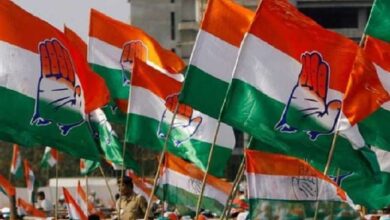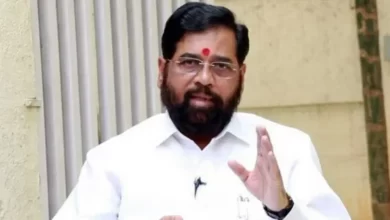Difficult road of electric vehicles

[ad_1]
The challenges that electric vehicles have to overcome in India are well known.
Sanjay Verma
The challenges that electric vehicles have to overcome in India are well known. As such, the first problem is charging the battery. They can be easily charged at homes, but the facilities for charging them on the roads are still negligible.
The concern about increasing pollution due to the use of petrol and diesel in vehicles has prompted the world to move towards alternatives, electric cars and buses have attracted the most attention. It is being said in particular that if only customers who use private cars can be converted to electric cars, then it can also open the way to solutions to problems like global warming and climate change.
Till now the call for electric cars was an environmental issue, but the rising prices of petrol and diesel have forced ordinary car customers to seriously consider this option. The situation is such that customers almost all over the world are inquiring about electric or hydrogen powered cars. On the other hand, governments are also encouraging automakers and customers to try this option by giving them various concessions in the form of grants. But the question here is whether there is any solid ground for the craze for electric cars, or is the whole matter just like flying cars?
In the recent past, there has been a growing interest among private car buyers towards electric vehicles. In the Mobility Consumer Index (MCI) survey conducted in July this year, forty per cent of the 9,000 participants from thirteen countries said they would be more likely than petrol-diesel vehicles if they had the option of buying an electric vehicle. Are ready to pay 20% more. Of these nine thousand participants, one thousand were Indians. According to the survey, three out of ten car buyers in India are of the opinion that they would prefer to buy an electric car provided they have a strong infrastructure related to it.
This means that if these cars are guaranteed to run for a hundred to two hundred miles on a single charge, they will have no problem paying a little more for it. Falling prices and sound infrastructure are two assurances that are changing consumer attitudes and behavior towards electric vehicles. However, an even bigger role in this is economic. Consumers stricken by the inflation of petrol and diesel want to get such vehicles as an alternative, where their commuting costs are almost the same as they have been spending on scooters or motorcycles. The middle-class consumer segment, in particular, wants to be free from the worry of rising petrol prices every day, even if they have to pay a high amount once for an electric car.
The arguments for moving towards electric vehicles are very straightforward and include factors such as controlling rising air pollution and challenges of energy security (dependence on mineral oil imports), etc. However, there are still many obstacles in the way of widespread adoption of electric vehicles. In such a situation, government support at various levels will be required to encourage this major transformation of the transport sector. The challenges that electric vehicles have to overcome in India are well known. As such, the first problem is charging the battery. They can be charged easily at homes, but the facilities for charging them on the roads are still negligible. Such charging stations are few and far between and are negligible in comparison to petrol pumps. The problem after this is that people are still not very sure about electric cars that the number of kilometers they claim to travel once charged, these cars can actually cover the same distance or No.
Despite these constraints, some consumers may pay higher prices for electric cars, but for most it is not possible to do so. The cost of these cars is one and a half to two times more than petrol-diesel cars. The reason for this is the lithium battery used in them, which costs up to forty percent of the actual cost of the car. The list of problems does not end here, but the ups and downs in our relations with neighboring China also add to these problems. In fact, India is largely dependent on imports from China for the lithium batteries and components needed for electric vehicles.
In such a situation, if China restricts this import, then the manufacture and supply of these cars can be interrupted immediately. Another major bottleneck is the potential shortfall in supply against the increasing demand for electricity in the country. In such a situation, if for some reason there is a decrease in the production of coal and there is a sharp increase in the demand for electricity due to electric cars, etc., then the balance between electricity production and demand-supply can be disturbed. If there is a power cut due to any reason, then electric vehicles will not be able to run on the road. The power crisis in most of the rural and urban areas of the country is still not resolved. In such a situation, it is not easy to become a market for electric cars in rural and urban areas.
By the way, the government is making continuous efforts to promote electric vehicles. In order to reduce the dependence on the import of petrol and diesel, apart from achieving the environmental goals, the policy of promoting electric vehicles has also been started at many levels. Recently, the rate of GST on electric vehicles has been reduced from twelve to five percent. Two other policies of the government are also noteworthy in this matter. One of these is the FAME India scheme which has been implemented from the current year. Under Faster Adoption and Manufacturing of Hybrid and Electric Vehicles in India (FAME India), the objective is to reduce the number of vehicles running on petrol and diesel. The second scheme is that of Production Linked Incentives (PIL), which seeks to remove barriers to rapid adoption of electric vehicles.
But in this scenario, the one front that we should be watching is disappearing. In fact, the option of public transport has been out of the discussion in this whole debate, rather it should be said that it is being deliberately excluded so that people go towards private cars. This will help the automakers, the revenue of the government will increase and the headache of the government will also be reduced if it helps in employment generation due to increased purchases. The government will be able to show in the figures that on the strength of its efforts, what percentage of jobs were created for the youth in the country. Therefore, it is worth considering that along with efforts to promote electric vehicles, should there not be efforts to repair the public transport system?
.
[ad_2]






